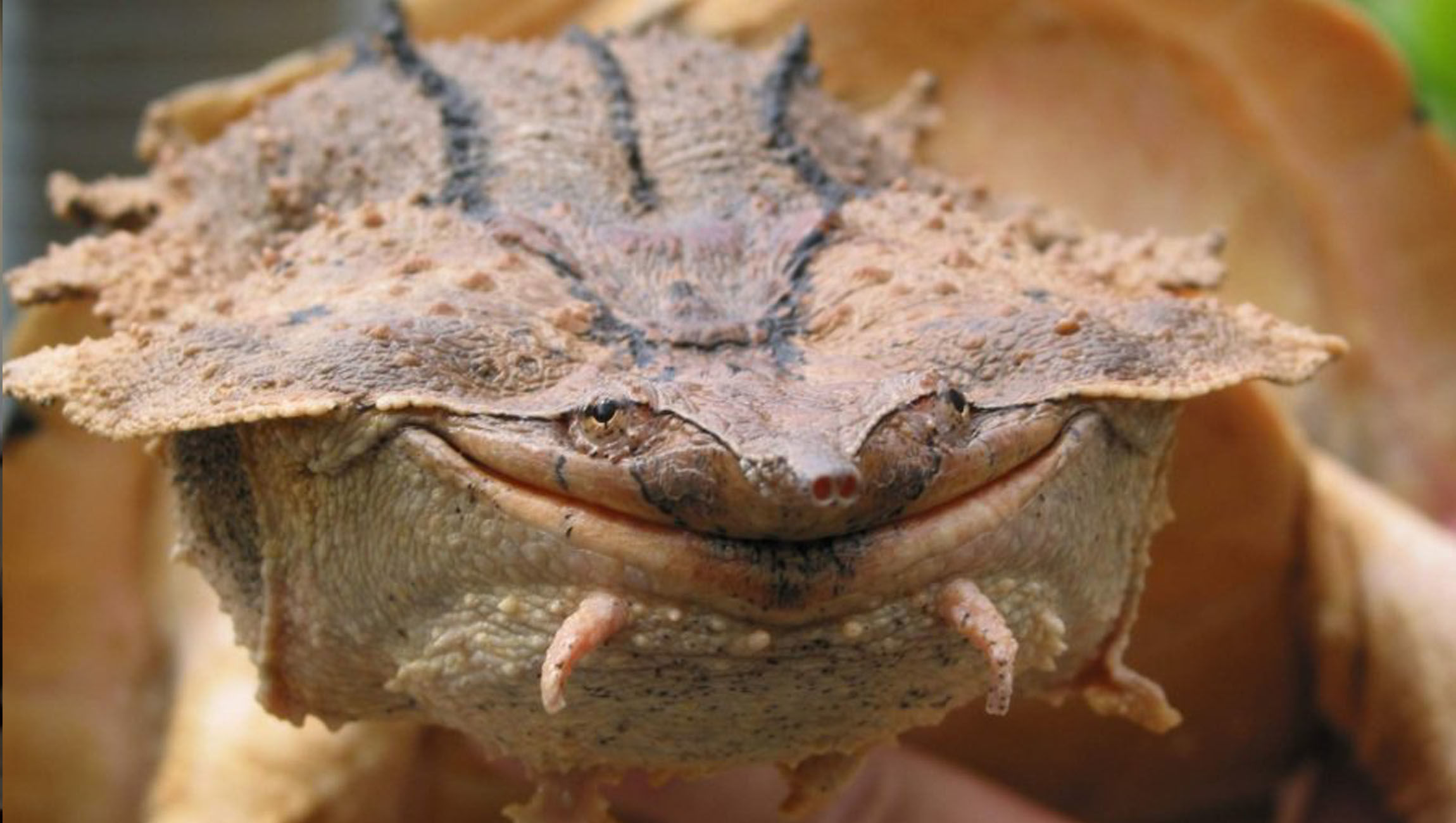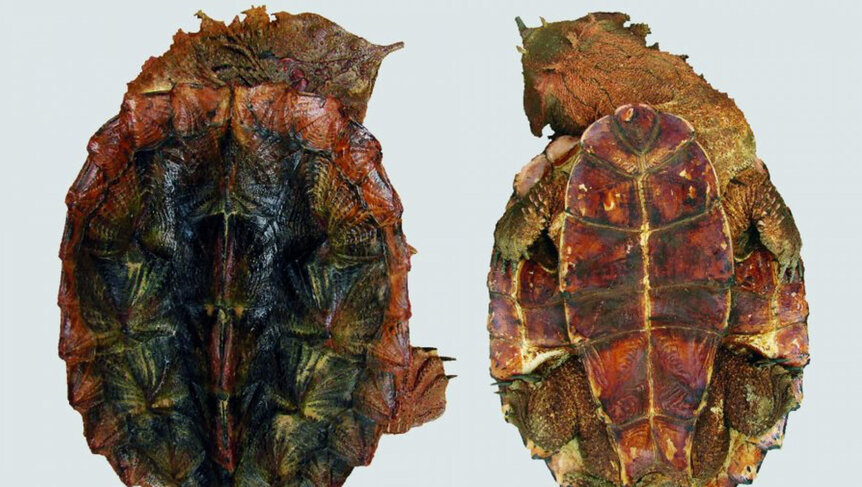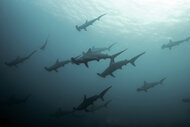Create a free profile to get unlimited access to exclusive videos, sweepstakes, and more!
New species of turtle looks like an alien rock with eyes, and it only gets weirder

You wouldn’t think that a freak of nature could get any freakier, but another species of what can only be called a living, breathing asteroid is about to crawl into your nightmares.
Matamata turtles have been around for tens of millions of years (they sure look like the sort of creature that emerged when all sorts of strange things were roaming the planet). They lurk in the Orinoco River and Amazon basin. Only one species was thought to exist, until University of Senckenberg scientist Uwe Fritz and his research team found out otherwise. Suspicious that the matamatas in the Amazon basin looked different from those in the Orinoco river, his DNA analysis revealed that there are actually two species of this bizarre reptile.
“Even though the matamata is universally known, its natural history, conservation status and biogeography are largely unexplored,” Fritz said in a study recently published in Molecular Phylogenics and Evolution.
The mystery surrounding the matamata does make it sort of alien in a way. These turtles are now thought to have split into two separate species around 13 million years ago, during the late Miocene, when the Amazon-Orinoco river basins had started to separate from each other. The species previously thought to be the only type of matamata (Chelus fimbriata), which lives in the Amazon basin, continued to evolve differently from the newly discovered species (Chelus orinocensis) in the Orinoco and Río Negro basins. Maybe the differences weren’t taken that seriously before because this creature is just so weird.
Evolutionary differentiation in species has been seen in places such as the Galápagos Islands, especially in flora and fauna that migrated to different islands and decided to stay and breed there. When two of what was once the same species are isolated in different places, they develop characteristics that are best suited to survival in that place, such as camouflage that gradually changes to match that particular area’s surroundings to better confuse predators. Most of the terrestrial fauna that live in the Galápagos have diverged into different species depending on the geological formation of the islands.
Fritz and his team used 75 DNA samples to prove that, even though they both look like walking rocks from outer space, Chelus orinocensis and Chelus fimbriata are actually two different species in terms of both genetics and morphology. They observed three mitochondrial DNA fragments in these samples. Mitochondrial DNA, found in the mitochondria (or the metabolic powerhouse) of a cell, has 37 genes. Enough of those differed from Chelus fimbriata to prove that the team was looking at an entirely different species.
“Our molecular and morphological analyses revealed the existence of two distinct, genetically deeply divergent evolutionary lineages of matamatas,” said Fritz.
You would be likely to step on either Chelus orinocensis or Chelus fimbriata if you were an unsuspecting tourist wading through the shallow waters where they prefer to hang out. They sure look like rocks, with their ridged shells and faces to match, but if you really look at their shell patterns, you’ll see they are different kinds of rocks. The reason you wouldn’t want to step on or near one is that it would probably mistake your foot for a fish. How it feeds is just as odd as its face. It has miserable eyesight and is unable to chew because of the unusual shape of its head, so it just leaves its mouth gaping to create a low-pressure vacuum that sucks prey in so it can then snap its mouth shut and send dinner down the hatch.
By the way, “mata mata” means “kill kill” in Spanish. It’s sort of an insult, since unattractive women in South America are often referred to as “mata matas”, but whether you think it’s hideous or unconventionally beautiful, you can’t deny that this turtle is always going to attract stares.
(via University of Senckenberg/Molecular Phylogenics and Evolution)















